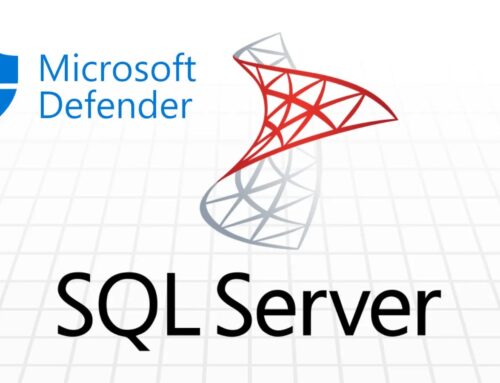
Multiple ImageMagick Vulnerabilities Cause Memory Corruption and Integer Overflows
Unpacking the ImageMagick Vulnerabilities: A Deep Dive into Memory Corruption and Integer Overflows
ImageMagick, a cornerstone in the world of open-source image processing, underpins countless web applications, content management systems, and desktop tools. Its pervasive use means that any significant vulnerability within its core can have widespread repercussions across the digital landscape. Recently, critical security flaws have been unearthed, posing a substantial risk of memory corruption and integer overflows, capable of exposing millions of users to malicious attacks.
The Discovery of Critical Flaws
Security researcher “urban-warrior” brought to light four serious vulnerabilities in ImageMagick, with two classified as high-severity. These flaws, publicly disclosed just days ago, highlight the ongoing challenge of securing widely adopted software components. The implications are significant: attackers could potentially execute arbitrary code on systems running ImageMagick through specially crafted image files. This vector of attack is particularly insidious as image uploads are a ubiquitous feature across many platforms.
Understanding the Vulnerabilities: Memory Corruption and Integer Overflows
The core of these vulnerabilities lies in how ImageMagick processes image data, specifically relating to memory management and arithmetic operations.
- Memory Corruption: This class of vulnerability occurs when a program attempts to access memory that it is not authorized to access, or when it corrupts valid memory. In the context of ImageMagick, this could mean an attacker provides a malformed image file that tricks the software into writing data outside of its allocated buffer. Such an action can overwrite critical program data or even inject malicious code that the program subsequently executes.
- Integer Overflows: Integer overflows happen when an arithmetic operation attempts to create a numeric value that is too large to be stored in the available memory space for an integer type. When this occurs, the value “wraps around” to a minimum value unexpectedly. For ImageMagick, an integer overflow could lead to incorrect memory allocation calculations, potentially causing buffer overflows or other memory corruption issues that can be exploited for arbitrary code execution.
While specific CVE details are still emerging, the high-severity designation suggests that these vulnerabilities provide a direct path to code execution, elevating them to a critical threat level for users and administrators alike. System administrators and developers leveraging ImageMagick in their environments should prioritize validating these updates and patching promptly.
Affected Systems and Potential Impact
Given ImageMagick’s widespread adoption, the list of potentially affected systems is extensive. Any application or service that processes user-submitted (or untrusted) image files using ImageMagick versions prior to the patched releases is at risk. This includes:
- Web servers and content management systems (CMS) that allow image uploads (e.g., WordPress, Drupal, Joomla!, custom applications).
- Cloud services and platforms that handle image manipulation.
- Desktop applications and command-line tools that rely on ImageMagick libraries.
- Any system performing image resizing, conversion, or modification.
The primary impact of successful exploitation is arbitrary code execution, which could lead to:
- Data breaches and unauthorized access to sensitive information.
- System compromise and installation of malware (e.g., ransomware, backdoors).
- Denial-of-service (DoS) attacks, rendering systems unavailable.
- Privilege escalation within compromised systems.
Remediation Actions
Immediate action is imperative to mitigate the risks posed by these ImageMagick vulnerabilities.
- Update ImageMagick: The foremost remediation is to update your ImageMagick installation to the latest stable version. Developers and maintainers usually release patches promptly for critical vulnerabilities. Continuously monitor the official ImageMagick website and security advisories for release notes and patch availability.
- Input Validation: Implement robust input validation for all uploaded image files. While ImageMagick itself should handle robustly, an additional layer of validation at the application level can help prevent malformed files from reaching the processing engine. This includes checking file headers, magic bytes, and general file structure before passing them to ImageMagick.
- Sandboxing/Least Privilege: Isolate ImageMagick operations within a sandboxed environment with the fewest possible privileges. For example, run ImageMagick within a container (like Docker) or a dedicated user account with minimal permissions. This limits the potential damage even if an attacker successfully exploits a vulnerability.
- Monitor and Log: Implement comprehensive logging for ImageMagick operations and system activities. Monitor these logs for unusual behavior, errors, or any signs of exploitation attempts. Automated security information and event management (SIEM) systems can be invaluable here.
- Web Application Firewall (WAF): Deploy a WAF in front of web applications that process images. A well-configured WAF can help detect and block malicious image upload attempts or unusual traffic patterns that might indicate an attack.
Tools for Detection and Mitigation
Leveraging appropriate tools can aid in identifying vulnerabilities and strengthening defenses:
| Tool Name | Purpose | Link |
|---|---|---|
| ImageMagick Official Website | Official source for latest versions and security advisories. | ImageMagick Changelog |
| Vulnerability Scanners (e.g., Nessus, OpenVAS) | Automated scanning for known vulnerabilities in installed software. | Nessus / OpenVAS |
| Web Application Firewalls (WAFs) | Protect web applications from common web-based attacks, including malicious file uploads. | (Various vendors, e.g., Cloudflare, Akamai, ModSecurity) |
| Containerization Tools (e.g., Docker, Kubernetes) | For sandboxing ImageMagick processes. | Docker / Kubernetes |
Looking Ahead: The Importance of Proactive Security
These recent ImageMagick vulnerabilities serve as a potent reminder of the importance of vigilance in cybersecurity. Open-source software, despite its many advantages, is not impervious to flaws. The collaborative nature of open-source development often means that identified vulnerabilities are patched swiftly, but only if users maintain their systems proactively.
Regular security audits, subscribing to security advisories, and maintaining a robust patch management strategy are non-negotiable practices for any organization or individual leveraging open-source components. As the digital landscape continues to evolve, so too do the methods of attack. Staying informed and acting decisively are key to safeguarding systems against emerging threats.





